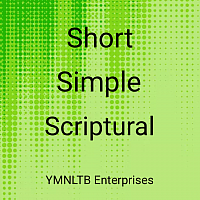YMNLTB is now...
ACTION GOSPEL TV!
Welcome to Action Gospel TV!
Here, truth is spoken plainly, faith is declared boldly, and no corner of the Gospel is trimmed to make it “easier.”
What began as a small, raw-edged podcast grew into a voice that refused to stay quiet. Over the years, we’ve tackled the hard questions, confronted convenient half-truths, and brought the Word of God into places where polite religion dares not go. From those simple, early recordings to today’s Action Gospel TV, the mission has stayed the same.
We are unapologetically biblical, committed to the whole counsel of God, and passionate about calling people not to a watered-down faith, but to the living Christ Himself. He is proclaimed here in all His crucified, risen, and coming again glory! This is a space for straight talk, deep conviction, and a faith that works in the grit and grind of real life.
Our New Store.
You said merch?


